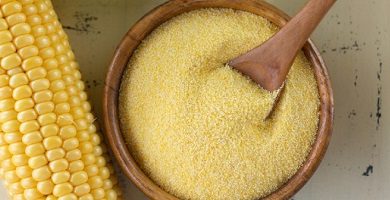Advantages of Wheat Flour
Advantages of Wheat Flour. Please watch this short video:
Wheat flour is a powdery substance derived from grinding wheat grains. It is one of the most commonly used flours worldwide and serves as a staple ingredient in many cuisines.

The process of milling wheat grains involves removing the outer bran layer, the germ, and the endosperm from the wheat kernel and grinding them into a fine powder.
There are several types of wheat flour available, each with different characteristics depending on how finely it’s ground and whether it’s made from hard or soft wheat varieties.
Some common types of wheat flour include:
All-purpose flour
This is a versatile type of wheat flour that is suitable for a wide range of baking and cooking purposes. It is made from a blend of hard and soft wheat varieties and has a moderate protein content.
Bread flour is made from hard wheat varieties and has a higher protein content compared to all-purpose flour.
This higher protein content gives bread flour its elasticity and strength, making it ideal for yeast bread and other baked goods that require a strong structure.
Cake flour
Cake flour is made from soft wheat varieties and has a lower protein content compared to all-purpose flour.
It has a finer texture and produces baked goods with a tender crumb, making it ideal for cakes, pastries, and other delicate baked goods.
Whole wheat flour
Whole wheat flour is made from grinding the entire wheat kernel, including the bran, germ, and endosperm.
It is higher in fiber and nutrients compared to refined wheat flour and has a slightly denser texture.
Whole wheat flour is often used in bread, muffins, and other baked goods for added nutritional value.
Semolina flour
Semolina flour is made from durum wheat and has a coarse texture. It is commonly used in making pasta, couscous, and some types of bread.
Wheat flour is a versatile ingredient used in a wide variety of recipes, including bread, pasta, pastries, cakes, cookies, and more.
Its gluten content gives it the ability to stretch and rise, making it an essential component in many baked goods. Wheat flour offers several advantages:
Advantages and Disadvantages of wheat Flour: the advantages and disadvantages of whole wheat flour include the following:

Advantages of Wheat Flour: Nutritional value
Wheat flour is a good source of essential nutrients like carbohydrates, fiber, protein, vitamins (such as b-vitamins), and minerals (like iron and magnesium).
These nutrients are vital for energy production, muscle function, and overall health.
Versatility
Wheat flour is incredibly versatile and can be used in various culinary applications.
It serves as the base for a wide range of products including bread, pasta, pastries, cakes, cookies, and more.
Texture and structure
The gluten protein in wheat flour provides elasticity and strength to the dough, contributing to the desired texture and structure of baked goods.
This allows for proper rising and a desirable crumb structure in bread and other baked items.
Flavor
Wheat flour has a distinct, slightly sweet flavor that enhances the taste of baked goods. It provides a comforting and familiar taste that many people enjoy.
Availability
Wheat flour is widely available in most regions of the world, making it easily accessible for consumers and food manufacturers alike.
Affordability
In many places, wheat flour is relatively affordable compared to alternative flour, making it a cost-effective option for both home and commercial baking.
Long shelf life
Properly stored wheat flour has a long shelf life, retaining its quality for several months or even years. This makes it convenient for stocking up and using as needed.
Cultural significance
Wheat has been a staple food in many cultures for centuries, making wheat flour an integral part of traditional cuisines worldwide.
However, it’s worth noting that wheat flour contains gluten, which can cause issues for individuals with celiac disease or gluten sensitivity.
Additionally, some people choose to avoid wheat flour due to dietary preferences or restrictions.
Benefits of wheat flour on the face
In many areas, wheat flour is known as “atta,” prized not only for its culinary uses but also for its benefits to the skin.
Atta has the potential to enhance your skin’s tone, promote a radiant glow, diminish sun spots, and regulate excess oil production.
Disadvantages of wheat flour
Here are some wheat flour disadvantages:
Gluten Sensitivity
Wheat flour contains gluten, a protein that can cause adverse reactions in individuals with gluten sensitivity or celiac disease.
Blood Sugar Spikes
Refined wheat flour has a high glycemic index, which means it can cause rapid spikes in blood sugar levels, potentially leading to energy crashes and weight gain.
Nutrient Loss
Processing of wheat flour can strip it of essential nutrients, such as fiber, vitamins, and minerals, reducing its nutritional value.
Digestive Issues
Some people may experience digestive discomfort or bloating after consuming wheat flour due to its high carbohydrate content or gluten intolerance.
Inflammatory Properties
Consuming large amounts of wheat flour, especially refined varieties, may contribute to inflammation in the body, potentially exacerbating conditions like arthritis or inflammatory bowel disease.
Weight Gain
Due to its high carbohydrate content and potential to spike blood sugar levels, overconsumption of wheat flour products can contribute to weight gain and obesity if not balanced with a healthy diet and lifestyle.
Processed Additives
Commercial wheat flour products often contain additives, preservatives, and other chemicals to enhance shelf life and texture, which may have negative health effects when consumed regularly.



